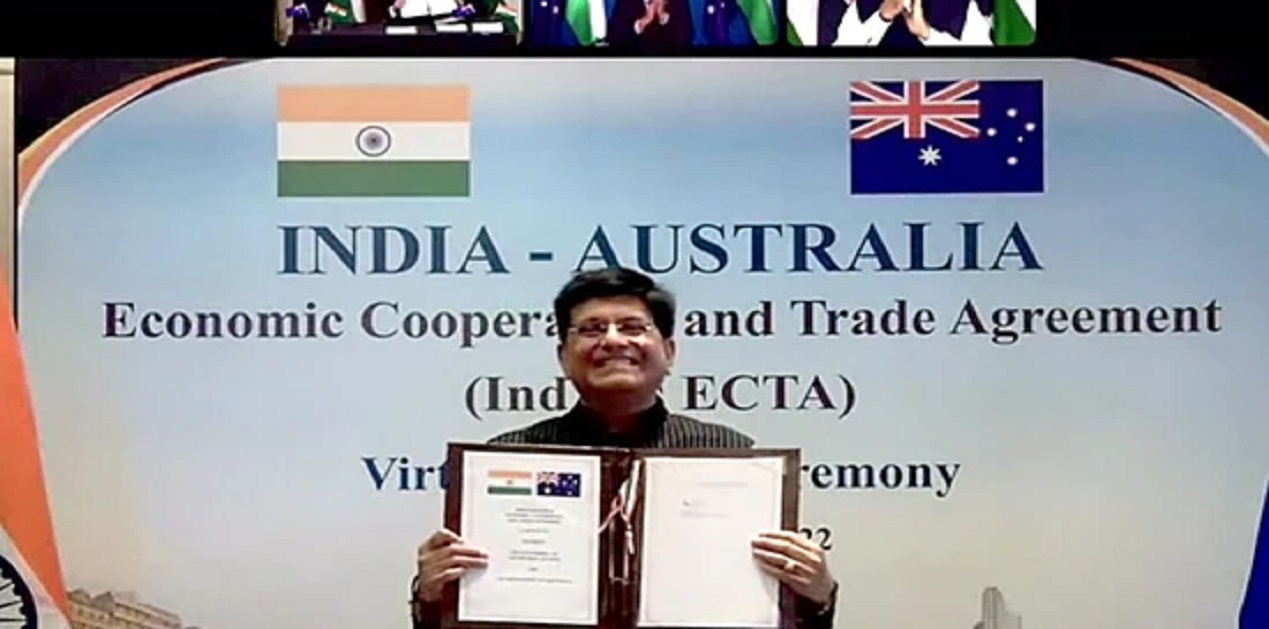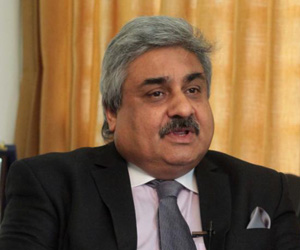The current trend of geoeconomics favours enhancement of investment and trade relationships with reliable partners. The Comprehensive Strategic Partnership between India and Australia announced in June 2020 along with agreements on providing mutual logistics access enhancing defence and security cooperation, and stepped-up collaboration in critical and emerging technologies provided a spurt to their ties. Their partnership in the Quad and participation in Malabar exercises has reinforced their shared security outlook. The Australian, Indian and Japanese Trade and Commerce Ministers have also met thrice and announced broad contours of a Resilient Supply Chains Initiative.
The recent Indian reforms in the mining, banking, MSME, agriculture, power, defence, space, electronics and textile sectors have been far reaching. Incentives have been announced in a slew of sectors under a Production Linked Incentive Scheme to boost manufacturing. New funding has been announced for the healthcare sector. Corporate tax rate has been brought down, retrospective taxation abolished, and India today is focussing on simplifying the difficulties faced in land acquisition, labour laws reform, and liquidity in order to attract new investments.
An India Economic Strategy to 2035 Report, launched by Australia in November 2018 and a reciprocal Australia Economic Strategy Report released in 2020 by India have both laid down the roadmap for the future. The Australian governments update to the 2018 report has just been released on 22 March 2022 - it has responded to the rapidly changing global developments, the need to ensure safe and secure supply chains, and the ongoing Indian reforms and developments in the country. Australia also announced initiatives in the update, totaling US$ 210 million, to address the bilateral investment cooperation in emerging sectors such as critical minerals, clean energy, cyber and critical technologies and space as well as the priority sectors of infrastructure, education, tourism, agribusiness and energy. Australia will also launch a center for Australia- India Relations. At their second virtual Summit on 21March, 2022, the two Prime Ministers agreed to boost cooperation in critical minerals and mobility of students and professionals.
India has emerged as an ideal strategic partner for Australia as it strives to overcome the challenges of rapid urbanization and infrastructure development, resources like clean water, digital connectivity and health amenities for its growing and aspirational population. There are excellent prospects for collaboration between India and Australia in some critical areas like science, vaccines, pandemic management, space and defence, critical minerals and related technologies, water resources, training and education, the circular economy, waste to wealth processes, grains management and logistics, and cyber technologies. India needs Australian commodities like Lithium, Cobalt, Vanadium, Rare Earths, Coal and LNG for its development needs, as well as technology to solve problems in areas such a financial inclusion, healthcare, and education, jointly with Australia. Australia has reserves of 21 of the 49 minerals identified as critical for India’s future strategy, especially the e-mobility programme. The new Education Policy in India has opened up possibilities for further collaborations with Australian Universities. New possibilities for collaboration have opened up in the defence and space sectors. India has a large technology resource pool which is complementary to Australian requirements. Australian Super funds and infrastructure companies are presented with increasing opportunities in the infrastructure and toll roads sector.
Investments are already driving the trade relationship between India and Australia – roughly US$20 billion has been invested by them into each other’s economies. Bilateral trade this year is poised to cross US$27 billion. However, liberalization of trade and services, and steps towards ease of doing business will add immensely to this momentum. There is thus new optimism after the announcement of the Australia India Economic Cooperation and Trade Agreement (AusInd ECTA) to be followed by a second phase of the Agreement by the end of 2022. Both sides have been trying to achieve this result since 2011 - efforts were stalled in 2015 after nine rounds, but a relaunch of the negotiations by the trade ministers in September 2021, and the last mile push by the Prime Ministers has been evident in this effort. Goods, services, trade remedies, rules of origin, sanitary and Phyto sanitary measures, technical barriers to trade, customs procedures and trade facilitation, and legal and institutional issues including dispute settlement, temporary movement of natural persons have been included in the agreement, which will cover most items of bilateral trade. Specific areas of interest to both sides in the services sector such as financial services, telecommunication services, professional services, and foreign investment framework has also been spelt out.
Over 96.4% of India goods by value 98% by tariff lines) will get zero duty access on day one of the pact coming into force, with the rest set for phased concessions. Tariffs will be eliminated on more than 85% of Australian goods exports to India (valued at more than $12.6 billion a year), rising to almost 91% (valued at $13.4 billion) over 10 years. India will gain from duty free access for a host of labour-intensive sectors like textiles and garments, gems, and jewelry, leather and footwear, furniture, food and farm products, engineering products, medical devices and automobiles. It has been agreed to have a separate chapter on pharmaceutical products under this agreement which will expedite the approval for patented, generic and biosimilar medicines. A liberalized visa regime will allow easier movement of professionals. Sensitive sectors like dairy, sunflower oil, wheat, sugar, rice, walnuts, apple, oilseeds medical devices, beef etc. have been kept out of the agreement, while Australian wines will see reduced duty from 150% to 25% over a period of 10 years in two categories, thus taking care of the Indian domestic wine industry. India will allow Australian wine that costs between $5 and $15 per 750 ml at a concessional duty of 100% initially from the current 150%. The tariff will be cut by 500 basis points annually for 10 years and finally kept at 50%. Similarly, the import duty on wines beyond $ 15 per 750 ml will be reduced to 75% immediately; it will then be cut by 500 basis points annually for 10 years to be kept at 25%.
In certain cases, India has tied concession to a quantitative cap. For instance, India will allow only long staple cotton at zero duty, subject to a cap of 300,000 bales, which is less than 1% of its annual domestic consumption. Duty free access has been provided for 1% of a certain variety of Australian cotton. Iron ore has also been kept out of the agreement. Australian coal which attracts 2.5% duty will also enjoy duty free access. Tariffs will also be eliminated for alumina, metallic ores, including manganese, copper and nickel, LNG and critical minerals including titanium and zirconium. Australian lobsters, and cray fish will also benefit. Sheep meat tariffs of 30% will be eliminated on entry into force, providing a boost for Australian exports that already command 20% of the Indian market. Wool will have the current 2.5 % tariffs eliminated on entry into force, supporting Australia’s second largest market for wool products. Tariffs up to 30% on avocados, onions, broad, kidney and adzuki beans, cherries, shelled pistachios, macadamias, cashews in shell, blue berries, raspberries, blackberries, currants will be eliminated over 7 years. Tariffs on almonds, lentils, oranges, mandarins, pears, apricots and strawberries will be reduced. Australian oranges and mandarins will get preferential access only up to 13,000 tonnes.
Tariffs on Australian pharmaceutical products and certain medical devices will be eliminated over five and seven years. The rationalization or elimination of tariffs will boost existing bilateral trade, and encourage investments in both countries. Liberalization of the services sector with enhanced Indian access in about 135 sub-sectors and MFN status in 120 subsectors, as well as market access to Australia in 103 subsectors and MFN status in 31 sub sectors (including in higher education and adult education, business services, medical and dental, architectural and urban planning; research and development, communication, construction and engineering, insurance and banking, hospital, audio visual, and tourism and travel) from the 11 broad service sectors will encourage flow of professionals and lead to reinforcement of each other’s economies.
Some of the key offers from Australia in services include annual quotas for Indian chefs (1800) and yoga teachers (entering the country as contractual service suppliers). Under this provision, temporary entry and stay is permissible for a period of up to 4 years, with possibility of further stay. Post study work visa of 2-4 years will be available for Indian students, postgraduates and STEM (science, technology, engineering and mathematics) specialists. Currently there are more than 100,000 Indian students enrolled in various courses in Australia. There will be an aggressive engagement on Mutual Recognition Agreements over the next 12 months on reciprocal basis; mutual recognition of professional services and other licensed / regulated occupations will be allowed; and work and holiday visa arrangement for young professionals will start. Australia will provide new access for young Indians to participate in working holidays in Australia. Places in Australia’s Work and Holiday programme will be set at 1000 per year and Australia will have two years to implement the outcome. Both sides are willing to facilitate the recognition of professional qualifications, licensing, and registration procedures between professional bodies. Both sides, in order to promote agricultural trade as part of the agreement will now work towards concluding an enhanced agricultural MOU.
Unlike the UAE FTA government procurement has not been included, but Commerce Minister Piyush Goyal has stated that this could be considered in the comprehensive FTA with Australia. According to him, the pact will generate 1 million jobs in the next 5 years. Product specific rules of origin have been in place for 800 products, and India will bring in more product specific rules of origin. Both countries are now aiming to almost double bilateral trade from to $50 billion from $27.5 billion (in 2021) in the next 5 years. Australian PM Scott Morrison has said that the Agreement would create enormous trade diversification opportunities for Australian producers and service providers bound for India, valued at up to $14.8 billion each year. Corporates in India and Australia will now look at the opportunities provided by this agreement with renewed interest.
(The paper is the author’s individual scholastic articulation. The author certifies that the article/paper is original in content, unpublished and it has not been submitted for publication/web upload elsewhere, and that the facts and figures quoted are duly referenced, as needed, and are believed to be correct). (The paper does not necessarily represent the organisational stance... More >>
Image Source: https://images.hindustantimes.com/img/2022/04/02/550x309/ANI-20220402240-0_1648925556144_1648925562940.jpg











Post new comment